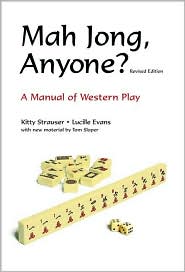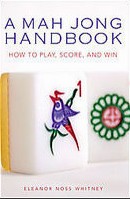
|
'Mah Jong, Anyone?'
(by Kitty Strauser and Lucille Evans) |

|
 Biopsychology.
Biopsychology.
 Criminal Behavior.
Criminal Behavior.
 Death and Dying.
Death and Dying.
 Ecology.
Ecology.
 Enneagram.
Enneagram.
 Evolution.
Evolution.
 Evolutionary Psychology.
Evolutionary Psychology.
 Personality Psychology
Personality Psychology
 Psychological research methods.
Psychological research methods.
Psychology books:
 Nature of Prejudice by Gordon W. Allport.
Nature of Prejudice by Gordon W. Allport.
 Learned Optimism by Martin E. P. Seligman.
Learned Optimism by Martin E. P. Seligman.
 Pessimism (defensive) (Norem).
Pessimism (defensive) (Norem).

 Links.
Links.
 Our BLOG (web log) of Books to read.
Our BLOG (web log) of Books to read.
 Best books read.
Best books read.
 Reviews of Harry Potter books.
Reviews of Harry Potter books.
